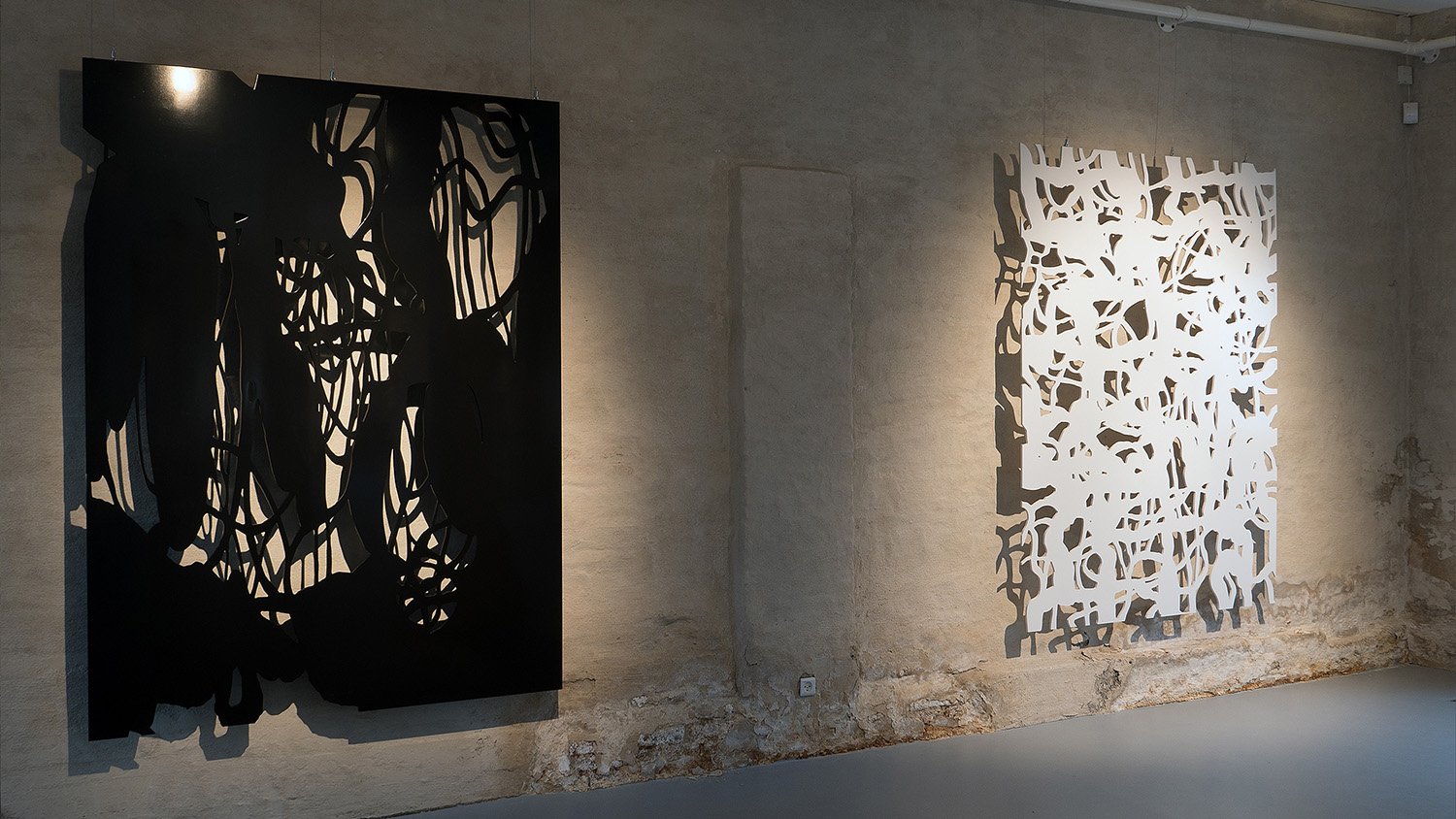White Matrix, Black Matrix
The two objects consist of patterns cut into sheets of synthetic material and spray painted in shiny white and black. The patterns are derived from motifs in Bjarne Werner's earlier paintings, generated on a computer and cut with a computerized milling machine.
In the world of mathematics, 'matrix' means a table, but in more general parlance it refers to a basic shape, as is the case here.
The two objects are reminiscent of papercuts, where the shapes are formed by the sections that have been cut away. This is most obvious in Black Matrix.
But there is more to it than that: The way the reliefs are hung in front of the wall and illuminated by spotlights creates new forms made up of the shadows of what is left behind. This is most evident in White Matrix.
Absence plays an important role in Black Matrix and White Matrix. The shapes appear through the cut surfaces. We encounter a graphic grid in the form of floating objects reminiscent of paper clippings without context. It is this absence that activates the environment. Perhaps we discover the contrast between the shining blackness and a rough wall. We see the play of light in which shadows and streaks create new patterns with each other.
It is a similar game used by the legendary Norse character, Kraka, in the tale of Ragnar Lothbrok. The beautiful Kraka was given an impossible task. She had to stand before Ragnar, neither dressed nor naked. But Kraka was cunning and wrapped herself in a fishing net so that she was covered and yet uncovered. It is the ambiguity of the net encounter in the rough and uneven surfaces of the matrices. Like loosely sewn strings, they hang before us like a wall that is both there and not there. They challenge our way of seeing.
Graphic objects, painted and digitally cut 10 mm synthetic panels, 200 x 150 cm. 2017



